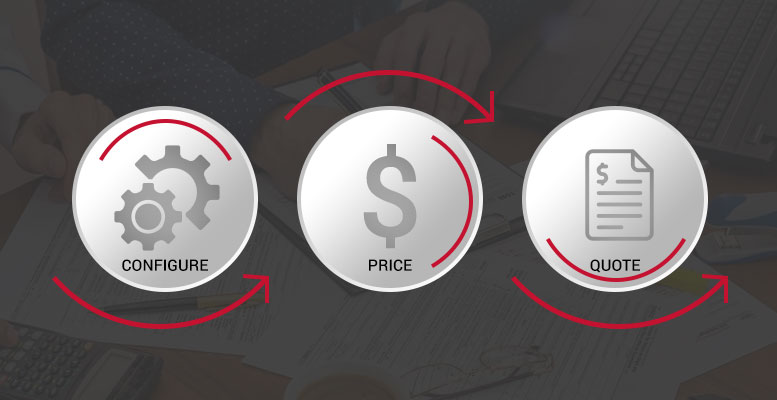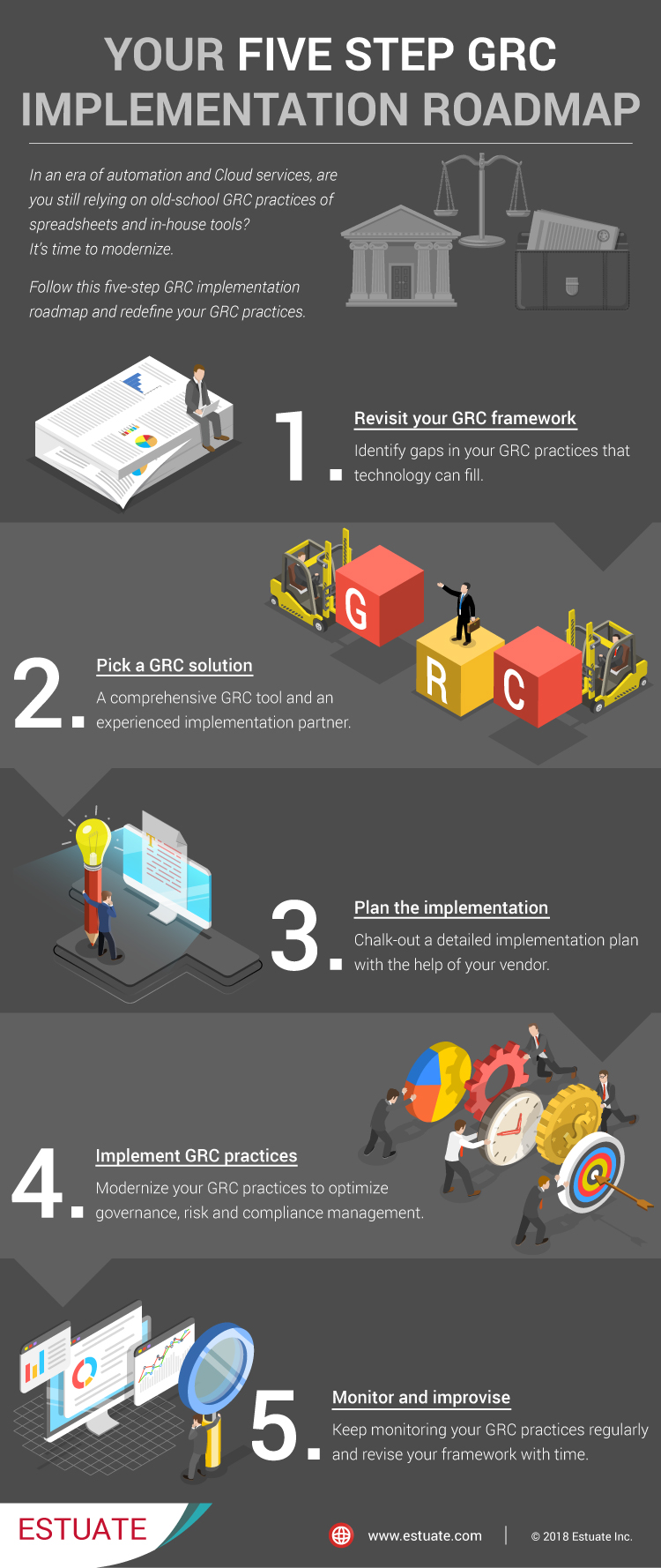Infographic: 5 most commonly faced Software Development challenges
A day in the life of a software developer is not a cakewalk. Understand the 5 most commonly faced challenges in software development and strategize your software projects better.
A day in the life of a software developer is not a cakewalk. Understand the 5 most commonly faced challenges in software development and strategize your software projects better.

Sales is a challenging job. From generating leads to engaging prospects, dealing with competitors and closing deals, salespeople have many crucial activities. Their role becomes even more challenging when multiple products and services come into play; when they start dealing with diverse market groups and pricing becomes more flexible and personalized.
When your enterprise grows in size and complexity, you need more effective business processes to survive fierce competition and grow in the market. Sometimes a technology modernization; and sales is not an exception.
In such complex business landscapes, CPQ is a lifesaver for sales professionals. Gartner says the CPQ market is expected to grow up to 25% by 2020. It looks like a must-have for modern enterprises in the coming years to improve sales and revenue.
CPQ, or Configure Price Quote is a set of software that helps sales teams manage the pricing of varied products and services, create accurate quotes and configure custom product packages for customers.
CPQ software improves the productivity of your sales teams and streamlines your sales process. It helps you generate sales quotes faster and with complete accuracy. It shortens the sales cycle and removes errors caused due to manual quoting. It also helps you send quotes, manage invoices, maintain configuration records and reporting.
If you’re an enterprise with a wide range of offerings, customer-specific quotations and configured pricing, you can definitely benefit from a CPQ software. However, not all businesses absolutely need a CPQ software; especially the ones that have limited products or services and fixed price models.
With hundreds of CPQ tools and vendors in the market, it is difficult to select an ideal solution to suit your enterprise needs. Consider these key factors while looking for a CPQ for your enterprise.
There are two popular types of a CPQ solution – On-premise and Cloud-based. On-premise CPQ software is a one-time investment as it is installed on authorized computer systems. It gives you complete ownership of the software. But you must look after its in-house maintenance, timely upgrades and strong security.
On the other hand, SaaS or Cloud-based CPQ systems are hosted on the Cloud by an external vendor. Sales teams can even access it remotely. It is a recurring subscription, and the vendor carries out maintenance, upgrades and security. Select a CPQ solution that best suits your enterprise and is more sustainable in the long run.
Carry out a detailed research with your internal sales teams and try to understand what CPQ features could benefit them the most. Depending on how basic or advanced a CPQ is, it can have multiple features. Choose a solution that offers the most suitable features for your sales team. Product configuration styles, pricing adjustments, automated proposals, custom quotes, analytics and guided selling are some primary features to consider.
Some enterprises still depend on legacy applications while some could be using newer technology systems. A sophisticated CPQ software is easy-to-integrate with traditional as well as modern software. Integration with your existing technology and applications is a key consideration.
Integration helps improve not just sales but your marketing activities too. An ideal CPQ should also be able to sync with your existing sales and marketing applications, customer database, ERP and CRM.
There is a growing trend in the demand for mobile CPQ systems. Mobility enables your sales teams to send quotes, configure pricing, view reports and communicate with prospects on the go. In this fast-moving and digital landscape, mobile CPQ also ensures higher customer satisfaction due to its speed and convenience. Go for a CPQ solution that is mobile-friendly and can be accessed anytime, using any device
The ultimate user of the CPQ software is your sales team. Some sales reps might be tech savvy, while others may not be. In either case, select a CPQ software that is easy to install, operate and customize as per individual needs. It takes less time to train your sales teams on software with simpler functionality. The implementation is also quicker and more effective.
You must modernize your sales techniques and generally followed practices from time to time. Many businesses are now realizing the need for technology-driven sales processes to stand out among competitors and satisfy the customer. Consider adopting a good CPQ that suits the unique demands of your enterprise to build a strong sales team and make your sales process more resilient in the digital age.
Smartphones and smart apps are at the heart of digital transformation. Here are six business applications that are a total lifesaver for small and medium-sized businesses.
Check out the detailed blog post here.

We produce an overwhelming amount of data every day, roughly 2.5 quintillion bytes. According to an IBM Study, 90% of the world’s data has been created in the last two years. It was perhaps the beginning of the “big data era” everyone talks about. Today, this big data is driving business operations and reshaping industries. Retail is one of the most widespread and dynamic industries around the globe. It is also the industry that has benefited the most from analytics; the greatest by-product of big data.
But why do retailers need analytics? Retailers face cut-throat market competition. Keeping up with industry trends is essential to stay ahead in the race, especially in this omni-channel business space. Also, as a customer-centric industry, retailers are constantly under the pressure to serve customers better and retain them for longer periods. And, it’s not so easy to satisfy customers and match up to all their expectations.
Retailers therefore need analytics to be able to understand business information better, gain meaningful insights and overcome these challenges by making data-driven decisions.
Retail analytics is the process of studying retail business information and providing actionable insights on the various critical aspects of retail, such as supply chain, inventories, customer demands, and more.
Top business houses are already leveraging analytics for retail success and making the most of it. Here are the 5 best reasons you must consider investing in retail analytics, if you haven’t already.
Analytics allows retailers to study consumer behavior and understand their buying patterns. This is perhaps the biggest reason why retailers are investing in big data analytics. A study conducted in the US reveals that while 96% people search for products online, 65% purchases are actually done offline.
Consumer behavior insights enable retailers to understand why these things happen and offers a solution to improve sales. It is especially a boon for e-commerce businesses, where heaps of customer details, such as most searched items, items added to cart, abandoned cart items, etc. are easily accessible.
Effective marketing is when you hit the right target using the right channels. Retail analytics helps marketers strategize their activities efficiently based on consumer behavior patterns and run profitable campaigns. As much as 13% retailers have already adopted “digital first” as their preferred marketing strategy.
For instance, a family apparel store owner would be interested in knowing where his millennial customers are most active and which channels are best to approach middle-aged customers for a festive offer. Analytics helps with such minute details and helps pick the right campaign for every customer group.
Customers love attention, and offering personalized deals is a great way to show your customers that they are important. 75% consumers are more likely to buy from a retailer that recognizes them by name, recommends options based on past purchases.
But the trick lies in offering personalized deals to the right customer at the right time. Analytics helps businesses track down transaction histories and consumer preferences. It indicates what the customer wants, and allows retailers to offer similar choices at affordable rates, closing sales most effectively.
Although omni-channel retail is the new trend now, 49% consumers still go for in-store shopping because they prefer to touch, feel or try a product before buying. One of the biggest advantages of adopting retail analytics is that it helps in streamlining not just online retail operations, but also helps boosting brick-and-mortar store performances.
It helps retailers analyze minute details like how often a customer visits the stores and how long he stays in which section and making further sales easier. With the help of analytics, it is also possible to stock up sufficient inventories based on consumer demands and market trends.
9 out of 10 customers like to shop at stores that offer free delivery. Whereas, 42% of customers rely on user reviews before buying a product. Customer satisfaction is the key catalyst behind retail success.
By using analytics, retailers are able to offer the customer exactly what he wants and engage him most effectively. This in turn helps in building a positive brand image, gaining trust and developing long-lasting retail relationships.
All in all, it is important for all businesses across all industries to understand that this is not just the era of big data, but also the era of “Analytics of Everything”, where analytics is everywhere, the powerful driving force behind successful businesses. There are more reasons to adopt analytics than to avoid it. It is probably the best decision to adapt retail analytics at the earliest; before it becomes an absolute must.

Quora says 100 million users hit by a malicious attack. Here are the facts.
2018 was the year of massive technology advancements. From where we started this year to where we have come, the progress has been phenomenal. We saw some of the most breakthrough technology trends, such as Artificial Intelligence, Blockchain, Natural Language Processing and Internet of Things making it big in the business world. But at the same time, 2018 has also been a year of some of the most shocking and alarming cybercrimes.
Although the Facebook data breach made the most news, there were bigger cyber security incidents at several other top business houses including Panera, Under Armour and even Aadhar and Marriott International to name a few. These data breaches are believed to have compromised personal information of hundreds of millions of users and customers. And now, the hackers are back with a major data breach; this time at Quora.
Launched in 2010, Quora is an online community where people can post questions related to over 400,000 topics and get answers/advice from others. Over the years, Quora has grown to become the biggest online Q&A portal with at least 300 million monthly users and 300 million unique monthly visitors.
The company recently disclosed a mega data breach stating that nearly 100 million users were affected by unauthorized access to one of its systems by a malicious third party. The breach is said to have occurred on 30th November, 2018. Soon after the incident was confirmed, the Quora team notified its potentially affected users through an email.
“On Friday we discovered that some user data was compromised by a third party who gained unauthorized access to our systems. We’re still investigating the precise causes and in addition to the work being conducted by our internal security teams, we have retained a leading digital forensics and security firm to assist us. We have also notified law enforcement officials”, the email stated.
According to the initial investigation, the hackers could have possibly gained access to the following information.
Account and user information including name, email address, IP, user ID, encrypted password, user account settings, personalization data
Public actions and content including drafts, such as questions, answers, comments, blog posts, upvotes
Data imported from linked networks like contacts, demographic information, interests, access tokens
Non-public actions, such as answer requests, downvotes, thanks, etc.
“It is our responsibility to make sure things like this don’t happen, and we failed to meet that responsibility. We are continuing to work very hard to remedy the situation, and we hope over time to prove that we are worthy of your trust”, the email further stated.
Quora hasn’t disclosed any information about who the hackers might be. However, as an immediate corrective action, Quora invalidated the accounts of all the affected users and suggested them to reset their passwords.’
What does it teach us?
With each incident we’re reminded that we’re not completely secure. Every data breach is an alarm; a signal to never let your guard down. There are hidden lessons for us in every major data breach. They teach us that
Implementing modern technology comes with potential risks and these risks should be acknowledged with appropriate measures.
Cyber-attacks can have huge repercussions and can lead to major reputational loss. Building cyber resilience is not a good practice anymore, it is a must-have.
Insider threats and minor negligences can lead to huge information leakages; hence every data privacy practice must be followed with due diligence.
In conclusion, data breaches can occur anytime, anywhere, regardless of the information security measures we take. The best probable way to prevent cyber-crime or contain the impact of an attack at your enterprise is to keep your data privacy software updated, employ multi-layered, more reliable cybersecurity solutions and remain extra-vigilant, more than ever before!

The concept of Governance, Risk and Compliance has been around for some time. Although there is no single, universally accepted definition for GRC, it is basically a comprehensive business strategy that aims at ensuring corporate governance and mitigating enterprise risk while staying in compliance with regulatory policies. It establishes clear guidelines for operations and a mechanism to prevent and fight business risks. It comprises of three main pillars.
Governance, ensuring business processes and corporate policies are practiced throughout the organization.
Risk, identifying the potential areas of risk and preparing the organization to minimize and prevent them.
Compliance, the ability to comply with legal and regulatory requirements and business policies.
For years, businesses have followed old school ways of implementing GRC programs using traditional methodologies such as spreadsheets and in-house tools. However, with emergence of breakthrough technologies like AI, Cloud and automation, the concept of GRC has evolved and modernized.
Today, all modern enterprises need to let go of traditional GRC practices and modernize their approach. But how do you get there? How can you adopt a winning GRC strategy? Here is a five-step GRC implementation roadmap that can help you plan, strategize and implement modern GRC practices effectively in your organization.
To start with, you need to review your existing GRC framework and identify the gaps that technology can fill. It would mean redefining what governance, compliance and risk means for your enterprise. A clear understanding of your key business objectives and important business processes will help you adopt the right GRC technology and develop appropriate policies, procedures and guidelines for your business.
In order to ensure effective functioning of a GRC initiative, it is important that you pick the right implementation partner and an ideal GRC solution for your enterprise. There are tons of GRC tools and hundreds of vendors in the market.Cloud based GRC solutions are most popular nowadays. MetricStream, BWise, SAP, Riskonnect, RSA Archer etc. are some market-leading GRC products available today. Go for a solution that comes with all the features you’re looking for. Also, do your research and select an experienced vendor that can implement GRC within a reasonable time-frame with maximum efficiency.
This step involves chalking out a well-defined GRC implementation plan. A business analyst or project manager appointed by the vendor visits your premises and spends time understanding your existing business processes and policies. He also conducts a risk assessment of your business and identifies areas that need to be protected.
He then develops an integrated GRC plan that best suits your organization, including a detailed demo of the selected GRC product, assigning roles and responsibilities and defining project timelines.
Once a detailed plan is developed, the next and the most crucial step is implementing GRC practices at your enterprise. Today, most GRC programs are Cloud driven and automated. Implementation involves policy and document management, operational risk management, IT risk management and corporate compliance management. It also includes spreading awareness about the new GRC policies and training people within the organization to practice them.
Implementing a GRC program is not a one-time activity. It is a continuous business practice and must be followed every day across all departments. It is therefore important to closely monitor and ensure that GRC practices are well followed within the enterprise. Also, since the business world is highly dynamic, you must modernize your GRC platform and revise your policies regularly to match business, industry and regulatory requirements.

GRC is essential because it brings about a stability in the way a business performs. It improves the quality of people, processes and information within an organization providing meaningful insights for better decision making. It is not just a good initiative anymore, it is an essential business requisite. Adopting a modern GRC program leads to a remarkable organizational change. However, the key to successful implementation is to have a clear strategy and take one step at a time.